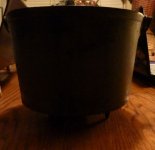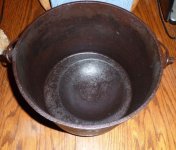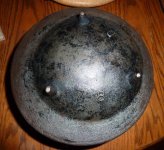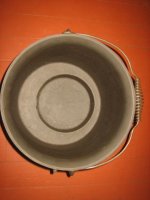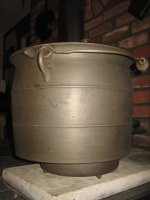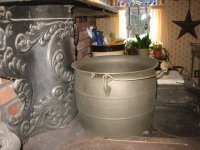Curious as to why the round bottom design. Possibly to conduct more heat to the kettle, with slightly more surface area?
I've been told that the eccentric design was to allow the kettle to sit as far to the back of the stove as possible, where it could simmer away and free up the front of the stovetop. On a six lid (eye) stove top, the back lid over the firebox can be a blast furnace, the center back one where smoke and heat exit to the stovepipe is somewhat cooler and the right lid runs luke warm. Hence the term "put on the back burner…?" I wonder if they were also used to keep a supply of hot water on hand, for stoves with no attached water tank.
Here's what it looks like in operation. Mine is unmarked except for a small "L" on the bottom.


